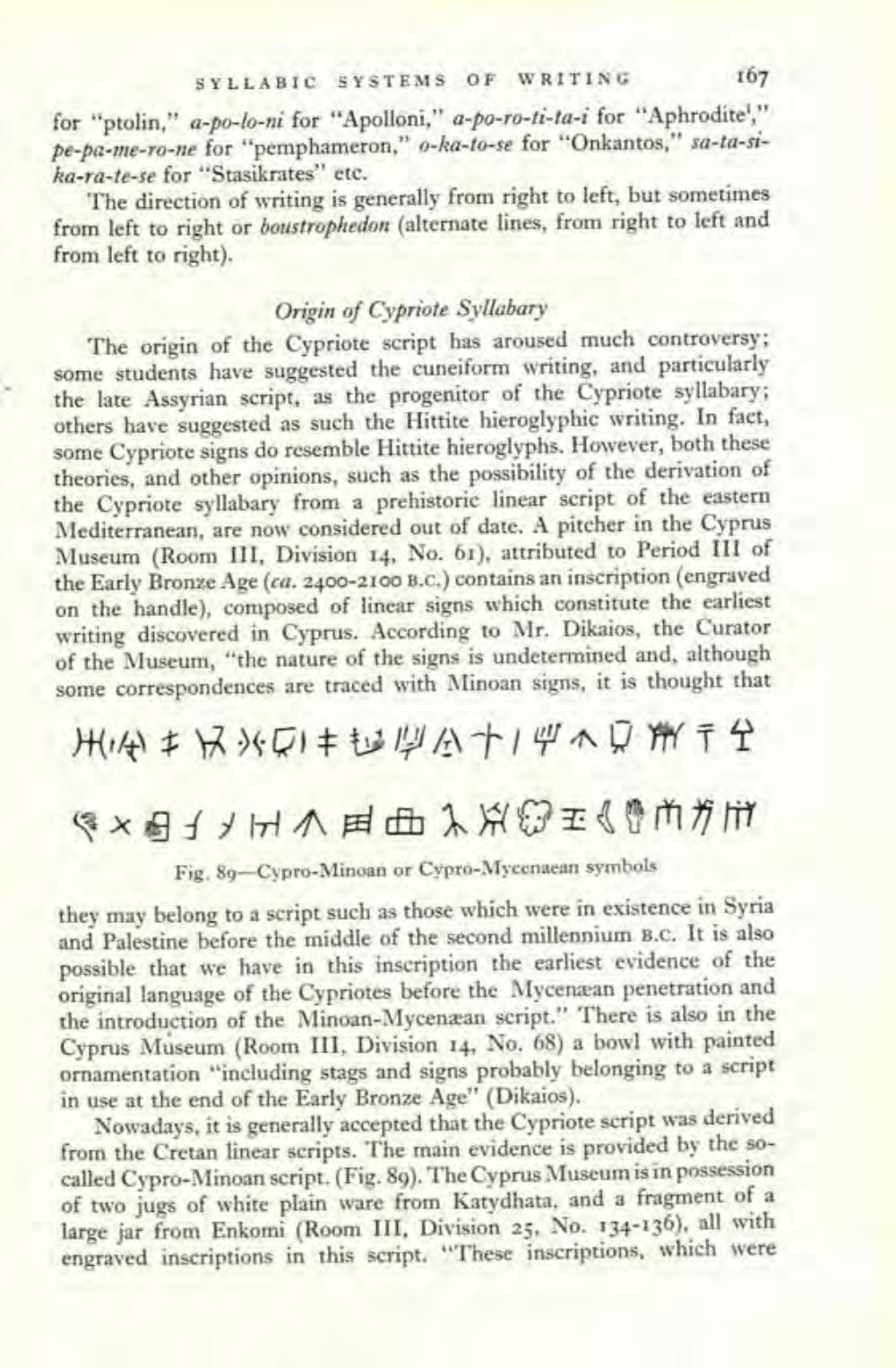________________
WRITING
167
SYLLABIC SYSTEMS OF
for "ptolin," a-po-lo-ni for "Apolloni," a-po-ro-ti-ta-i for "Aphrodite'," pe-pa-me-ro-ne for "pemphameron," o-ka-to-se for "Onkantos," sa-ta-sika-ra-te-se for "Stasikrates" etc.
The direction of writing is generally from right to left, but sometimes from left to right or boustrophedon (alternate lines, from right to left and from left to right).
Origin of Cypriote Syllabary
The origin of the Cypriote script has aroused much controversy; some students have suggested the cuneiform writing, and particularly the late Assyrian script, as the progenitor of the Cypriote syllabary; others have suggested as such the Hittite hieroglyphic writing. In fact, some Cypriote signs do resemble Hittite hieroglyphs. However, both these theories, and other opinions, such as the possibility of the derivation of the Cypriote syllabary from a prehistoric linear script of the eastern Mediterranean, are now considered out of date. A pitcher in the Cyprus Museum (Room III, Division 14, No. 61), attributed to Period III of the Early Bronze Age (ca. 2400-2100 B.C.) contains an inscription (engraved on the handle), composed of linear signs which constitute the earliest writing discovered in Cyprus. According to Mr. Dikaios, the Curator of the Museum, "the nature of the signs is undetermined and, although some correspondences are traced with Minoan signs, it is thought that
HA
QIHATIDY
Am
Fig. 89-Cypro-Minoan or Cypro-Mycenaean symbols
they may belong to a script such as those which were in existence in Syria and Palestine before the middle of the second millennium B.C. It is also possible that we have in this inscription the earliest evidence of the original language of the Cypriotes before the Mycenaæan penetration and the introduction of the Minoan-Mycenaean script." There is also in the Cyprus Museum (Room III, Division 14, No. 68) a bowl with painted ornamentation "including stags and signs probably belonging to a script in use at the end of the Early Bronze Age" (Dikaios).
Nowadays, it is generally accepted that the Cypriote script was derived from the Cretan linear scripts. The main evidence is provided by the socalled Cypro-Minoan script. (Fig. 89). The Cyprus Museum is in possession of two jugs of white plain ware from Katydhata, and a fragment of a large jar from Enkomi (Room III, Division 25, No. 134-136), all with engraved inscriptions in this script. "These inscriptions, which were




